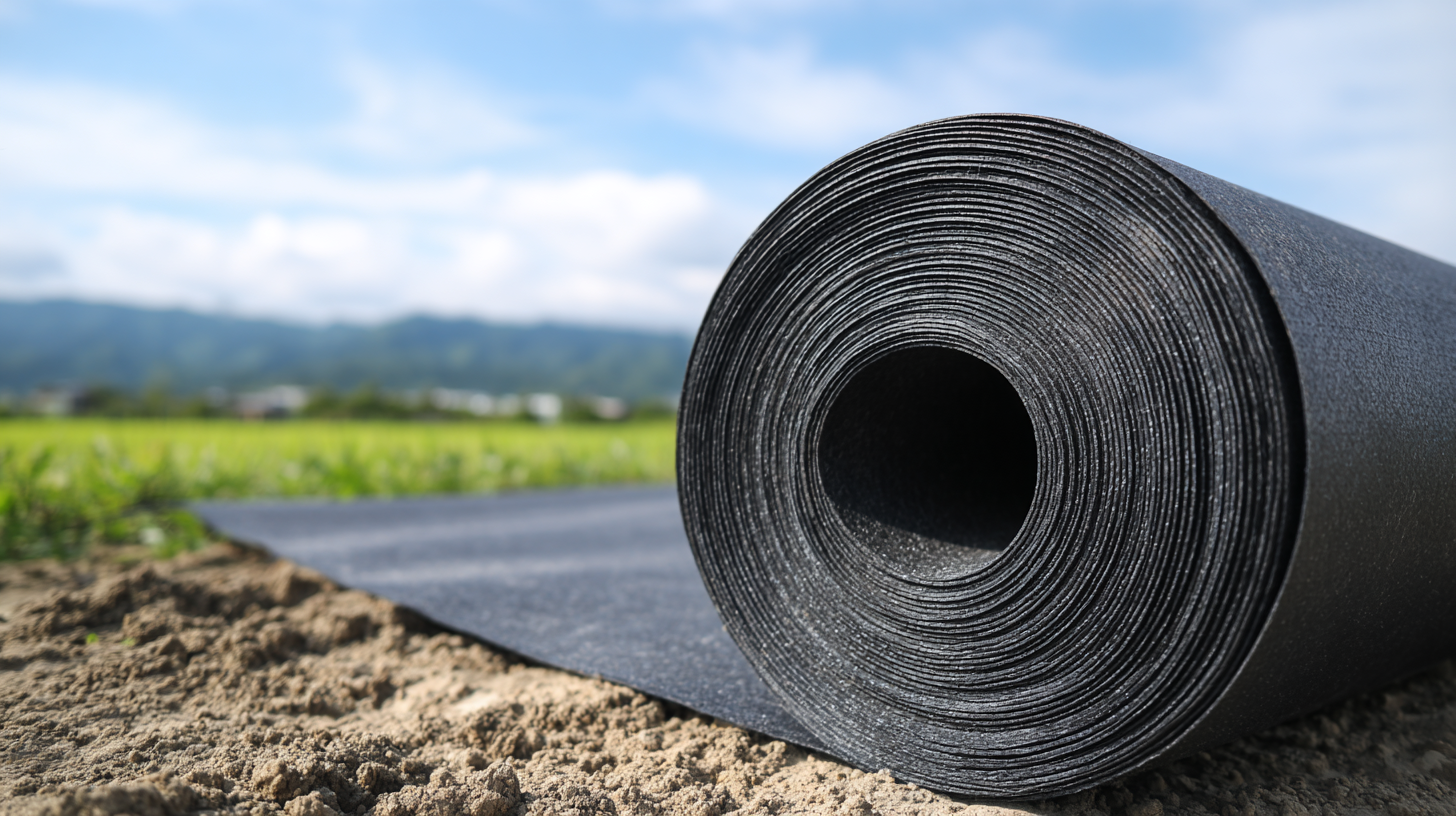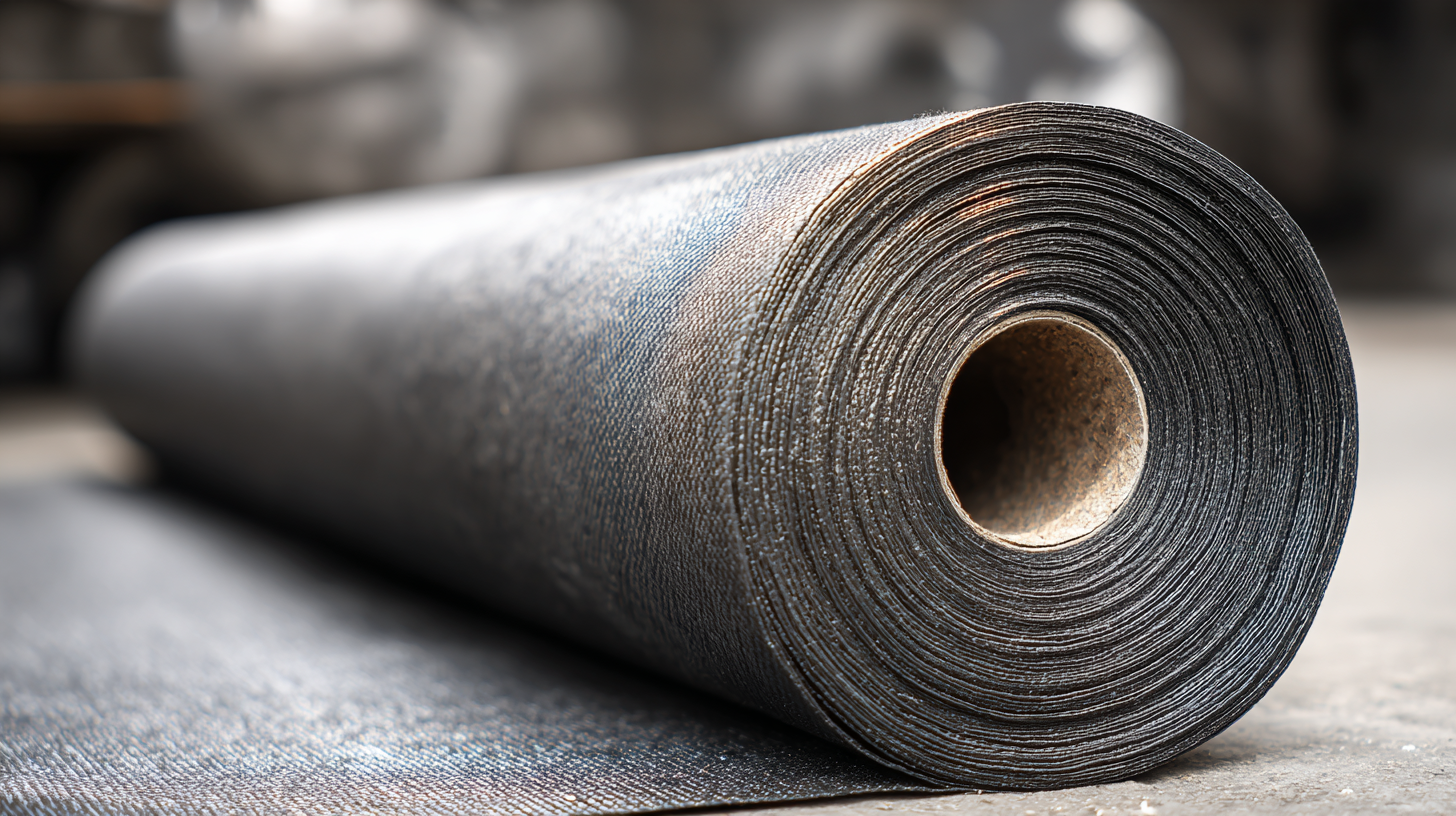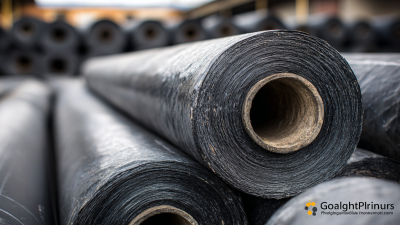Inquiry
Form loading...
- Phone
- E-mail
The significance of HDPE Geo Membrane in environmental protection cannot be understated, as this innovative material plays a crucial role in various applications, including waste management, water containment, and soil protection. According to Dr. Emily Anderson, a leading expert in geosynthetics, "The use of HDPE Geo Membrane is a game changer for sustainable environmental practices, providing an effective barrier against contaminants." This sentiment highlights the growing recognition of the material's versatility and efficiency in safeguarding our ecosystems.

As we explore the top 10 benefits of using HDPE Geo Membrane in environmental protection, it becomes clear that its advantages extend beyond mere containment. From reducing pollution risk to improving durability in harsh conditions, HDPE Geo Membrane has emerged as a vital component in modern environmental techniques. With increasing pressures on natural resources and the urgent need for sustainable solutions, the role of HDPE Geo Membrane is more pertinent than ever.
By understanding and utilizing the benefits of HDPE Geo Membrane, industries can not only enhance their environmental preservation efforts but also contribute to a healthier planet for future generations. In this article, we will delve into the key benefits of HDPE Geo Membrane that are shaping the future of environmental protection.
High-Density Polyethylene (HDPE) geomembranes have emerged as a premier solution for containment challenges in environmental protection. One of the primary advantages of HDPE geomembranes is their outstanding chemical resistance, which exceeds 90% when tested against a variety of harsh chemicals and hazardous waste. According to the Geosynthetic Research Institute, these durable membranes are critical in applications such as landfill liners and containment ponds, providing a reliable barrier against leachate and preventing soil and groundwater contamination.
Moreover, HDPE geomembranes exhibit excellent tensile strength and elongation properties, which further enhance their effectiveness in containment solutions. A report from the International Geosynthetics Society highlights that the high flexibility of these membranes allows them to conform effectively to uneven surfaces, ensuring comprehensive coverage and reducing the risk of leaks. Coupled with a long service life, often exceeding 50 years, HDPE geomembranes are not only a cost-effective choice but also a sustainable option for long-term environmental protection initiatives, reinforcing their role in safeguarding ecosystems and human health.

The use of High-Density Polyethylene (HDPE) geomembranes presents significant advantages in improving water quality protection, a crucial component in environmental safeguarding. These liners are employed in various applications, including landfill management and canal lining, providing an effective barrier against contamination. Recent developments highlight the efficacy of a 0.5 mm HDPE membrane for canal lining, which, when paired with a protective layer, ensures that water quality remains uncompromised, safeguarding ecosystems and communities reliant on these water sources.
Furthermore, recent regulatory actions, such as the introduction of Quality Control Orders for geotextiles, emphasize the growing recognition of HDPE geomembranes in maintaining environmental standards. The focus on quality assures that these materials not only perform effectively but also contribute to sustainable practices in construction and waste management. As the demand for reliable environmental protection solutions increases, the role of HDPE geomembranes becomes ever more critical, highlighting their potential in promoting clean water initiatives and mitigating pollution risks.
This chart illustrates the key benefits of utilizing HDPE Geo Membrane for improved water quality protection, highlighting its effectiveness in various environmental applications.
The cost-effectiveness of HDPE geo membrane in environmental projects is a significant consideration for engineers and project managers. High-Density Polyethylene (HDPE) geo membranes have gained popularity due to their durability, chemical resistance, and low permeability, making them ideal for waste containment, water conservation, and soil protection. According to a report by the Geosynthetic Research Institute, the initial cost of HDPE geo membranes is often offset by long-term savings in maintenance and potential environmental remediation, which can reduce overall project costs by up to 30%.
When selecting materials for environmental protection, the longevity of HDPE geo membranes plays a crucial role. These membranes can last over 30 years if properly installed and maintained, which further enhances their cost-effectiveness. Additionally, they require minimal maintenance compared to other materials, thereby decreasing lifetime costs significantly.
**Tips:** Always consider the total cost of ownership rather than just the upfront costs. Investing in higher-quality materials like HDPE geo membranes can lead to significant savings in the long run due to their durability. Furthermore, ensure that your project complies with local regulations to avoid unexpected expenses down the line. By prioritizing cost-effective materials, you can protect both the environment and your budget.
| Benefit | Description | Cost-Effectiveness | Application Areas |
|---|---|---|---|
| Durability | HDPE geo membranes are resistant to environmental stress and degradation. | Long lifespan reduces long-term costs. | Landfills, water bodies. |
| Chemical Resistance | They can withstand various chemicals and prevent contamination. | Cost savings by minimizing remediation efforts. | Industrial waste sites. |
| Waterproofing | Provides excellent waterproof barriers. | Reduction in potential water treatment costs. | Dams, reservoirs. |
| Lightweight | Easy to handle and transport, reducing installation time. | Decreased labor costs due to faster installation. | Road construction, civil engineering projects. |
| Versatility | Can be used in various applications for different environmental needs. | Adaptability leads to diverse project savings. | Agriculture, construction. |
| Sustainability | Contributes to sustainable environmental practices. | Long-term environmental benefits offset initial costs. | Eco-friendly projects. |
| Cost Savings | Significant savings in maintenance and operational costs. | Immediate ROI through reduced expenses. | Waste management, mining. |
| Regulatory Compliance | Helps meet environmental regulations and standards. | Avoid fines leading to savings. | Government projects. |
| Preventative Measures | Act as barriers to prevent leaks and contamination. | Lower liability costs through effective prevention. | Site remediation projects. |
 High-Density Polyethylene (HDPE) geo membranes have become a critical component in environmental protection, particularly due to their exceptional durability and longevity in harsh environments. According to a report by the Geosynthetic Research Institute, HDPE geo membranes can last over 50 years under appropriate conditions, thanks to their resistance to UV radiation, chemicals, and extreme temperatures. This longevity not only reduces the frequency of replacement in containment applications but also significantly minimizes environmental risks associated with waste leakage.
High-Density Polyethylene (HDPE) geo membranes have become a critical component in environmental protection, particularly due to their exceptional durability and longevity in harsh environments. According to a report by the Geosynthetic Research Institute, HDPE geo membranes can last over 50 years under appropriate conditions, thanks to their resistance to UV radiation, chemicals, and extreme temperatures. This longevity not only reduces the frequency of replacement in containment applications but also significantly minimizes environmental risks associated with waste leakage.
Furthermore, a study by the National Institute of Environmental Health Sciences indicates that the tensile strength of HDPE geo membranes, which can reach upwards of 4,500 psi, allows them to withstand the stresses encountered in harsh applications such as landfill caps and wastewater treatment facilities. This remarkable resistance to punctures and tears ensures that the membranes maintain their integrity over time, thus providing essential protection for soil and groundwater resources from potential contaminants. The combination of durability, resistance to environmental challenges, and longevity makes HDPE geo membranes an invaluable asset in the field of environmental protection.
High-Density Polyethylene (HDPE) geo membranes have emerged as a versatile solution in various environmental applications, offering robust protection against contaminants and facilitating effective waste management. One of the most significant advantages of HDPE geo membranes is their durability and resistance to chemical exposure, making them ideal for use in landfills, mines, and hazardous waste sites. Their remarkable impermeability ensures that harmful substances remain contained, thereby safeguarding groundwater and surrounding ecosystems.

When considering the application of HDPE geo membranes, it's essential to assess the specific requirements of your project. Tips for optimal usage include conducting thorough site assessments to identify soil characteristics and potential contaminants, which can influence membrane selection. Additionally, ensuring proper installation techniques is crucial to maximizing the lifespan and efficacy of the membrane. Using geotextiles alongside HDPE can also enhance filtration and drainage, further promoting environmental protection.
The versatility of HDPE geo membranes extends beyond waste containment; they are also used in various construction applications, including water reservoirs and artificial lakes. Implementing HDPE membranes in these projects not only prevents leakage and loss of valuable resources but also supports sustainable development goals. Always review local regulations concerning environmental protections to ensure compliance while utilizing these advanced materials effectively.






